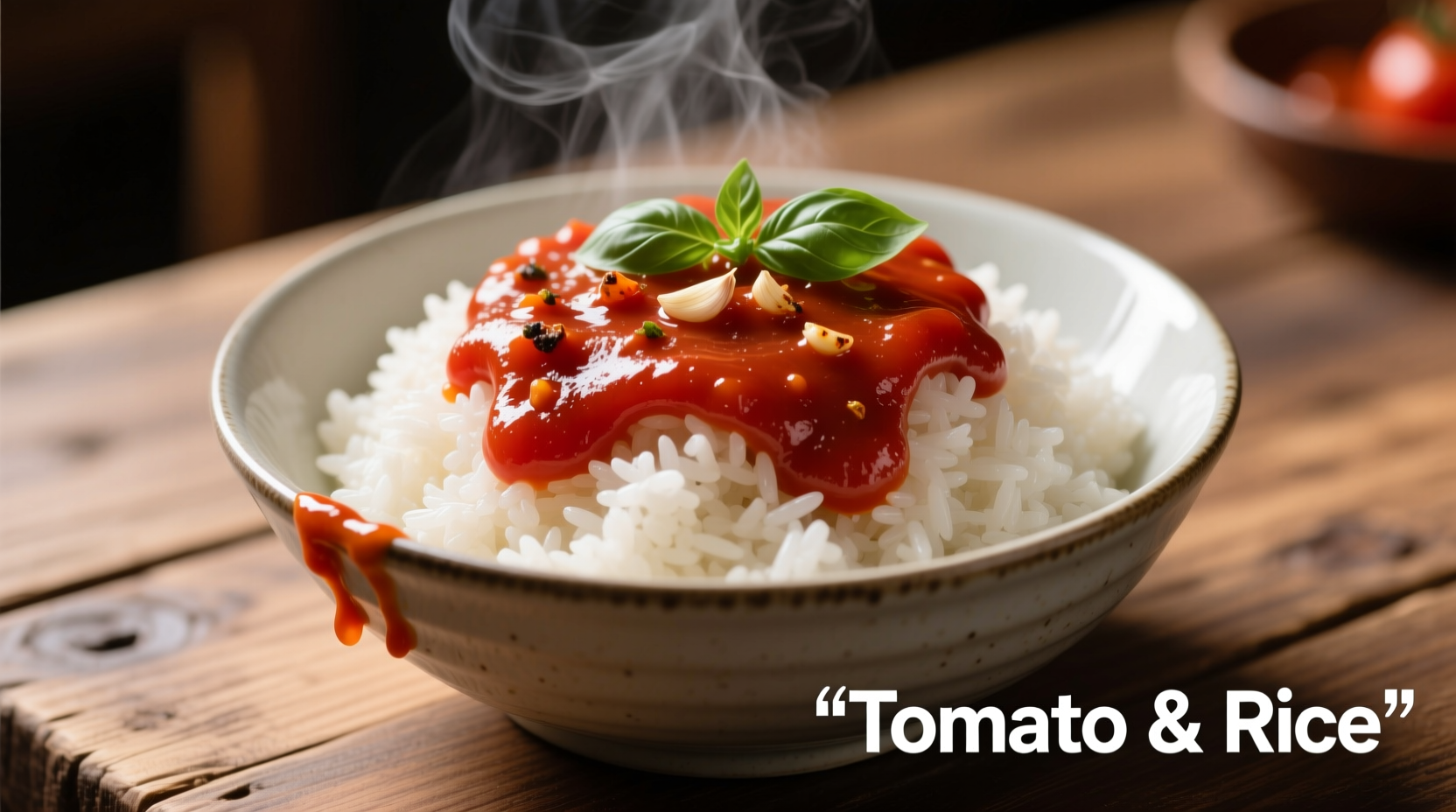Combining rice and tomato sauce creates one of the most versatile and globally beloved food pairings. This simple yet satisfying combination appears in cuisines from Spain to Southeast Asia, offering endless possibilities for customization while providing balanced nutrition. Whether you're looking for a quick weeknight dinner or exploring cultural culinary traditions, understanding the fundamentals of this pairing unlocks countless meal options.
The Global Journey of Rice and Tomato Sauce
Rice and tomato sauce represents a fascinating culinary fusion that emerged after tomatoes arrived in Europe from the Americas. While rice cultivation dates back thousands of years in Asia, tomatoes only entered European cuisine around the 16th century. The combination gained prominence in Spanish cuisine during the 18th century, eventually spreading through colonial trade routes to Latin America, the Philippines, and beyond.
Evolution of Rice and Tomato Sauce Combinations
- 1500s - Tomatoes introduced to Europe from Mesoamerica
- 1700s - Spanish cooks begin combining tomatoes with rice, creating early versions of what would become paella
- 1800s - Cuban arroz con tomate develops as a staple dish using local ingredients
- Early 1900s - Italian-American communities adapt the combination into "rice and gravy" dishes
- Mid-1900s - Filipino sinangag (garlic fried rice) paired with tomato-based sauces becomes popular
Nutritional Profile and Health Benefits
When prepared thoughtfully, rice and tomato sauce offers a balanced meal with carbohydrates, vitamins, and antioxidants. The tomato component provides lycopene, vitamin C, and potassium, while rice delivers energy-sustaining carbohydrates. Adding vegetables or lean proteins transforms this basic combination into a complete, nutritionally balanced meal.
| Nutrient | Per Serving (1 cup) | Daily Value % |
|---|---|---|
| Calories | 280 | 14% |
| Carbohydrates | 55g | 20% |
| Protein | 6g | 12% |
| Fiber | 3g | 11% |
| Lycopene | 15mg | Significant |
According to research from the USDA Food and Nutrition Information Center, cooking tomatoes with a small amount of healthy fat significantly increases lycopene absorption. This makes tomato sauce an excellent vehicle for this powerful antioxidant.
Mastering the Perfect Rice and Tomato Sauce Combination
Creating exceptional rice and tomato sauce requires attention to both components. Start with quality ingredients and follow these professional techniques:
Essential Rice Preparation Techniques
- Rinse thoroughly - Remove excess starch for fluffier rice
- Use proper water ratio - Typically 1.5 cups water per cup of rice
- Add flavor early - Cook rice in tomato sauce or broth instead of water
- Rest after cooking - Let rice sit covered for 10 minutes before fluffing
Building Flavorful Tomato Sauce
The foundation of great tomato sauce starts with quality tomatoes. While canned San Marzano tomatoes provide consistent flavor year-round, fresh ripe tomatoes work well in season. Follow these steps for maximum flavor:
- Sauté aromatics (onion, garlic) in olive oil until translucent
- Add tomatoes and simmer gently for 20-30 minutes
- Season with herbs like oregano, basil, or epazote depending on regional style
- Finish with a splash of acid (lemon juice or vinegar) to brighten flavors

Regional Variations Worth Trying
Different cultures have developed distinctive approaches to rice and tomato sauce combinations. Understanding these variations helps you appreciate the versatility of this basic pairing:
Spanish-Inspired Tomato Rice
Originating from Valencia, this version uses short-grain rice that absorbs liquid while maintaining texture. Key elements include saffron for color and flavor, along with regional vegetables like artichokes or green beans. The rice cooks directly in the tomato broth, creating a characteristic socarrat (crispy bottom layer) when done properly.
Cuban Arroz con Tomate
This Caribbean variation features long-grain rice cooked with tomato sauce, cumin, and sometimes a touch of sugar. Cubans often add olives and capers for briny complexity. According to culinary research from the Library of Congress, this dish evolved from Spanish influences adapted to available Caribbean ingredients during the colonial period.
Italian-American Style
In many Italian-American households, "rice and gravy" refers to long-grain rice served with a meat-based tomato sauce. This adaptation emerged when Italian immigrants substituted rice for pasta as a more economical option. The sauce typically simmers for hours with meatballs or sausage to develop deep flavors.
Common Mistakes to Avoid
Even simple dishes can go wrong without proper technique. Watch for these common pitfalls:
- Overcooking the rice - Results in mushy texture that can't hold sauce properly
- Using low-quality tomato product - Canned tomatoes with additives affect flavor
- Skipping the bloom step - Not cooking out raw tomato flavor before serving
- Seasoning at the wrong time - Add salt early for better flavor integration
Enhancing Your Basic Combination
Elevate your rice and tomato sauce with these professional chef techniques:
- Add roasted vegetables like eggplant or zucchini for texture contrast
- Stir in fresh herbs just before serving for brightness
- Top with toasted nuts or seeds for crunch
- Include protein sources like beans, lentils, or shredded chicken
- Finish with a drizzle of high-quality olive oil
Storage and Reheating Tips
Proper storage maintains quality when making rice and tomato sauce ahead of time:
- Cool completely before refrigerating to prevent sogginess
- Store components separately for best results when reheating
- Add a splash of water when reheating to restore moisture
- Avoid microwaving on high power which creates uneven heating
Practical Applications for Different Occasions
This versatile combination adapts perfectly to various meal contexts:
- Weeknight dinners - Ready in under 30 minutes with pantry staples
- Meal prep - Components store well for 4-5 days in the refrigerator
- Crowd-pleasing meals - Easily scaled up for family gatherings
- Customizable base - Accommodates dietary restrictions by adjusting ingredients











 浙公网安备
33010002000092号
浙公网安备
33010002000092号 浙B2-20120091-4
浙B2-20120091-4